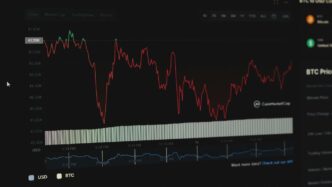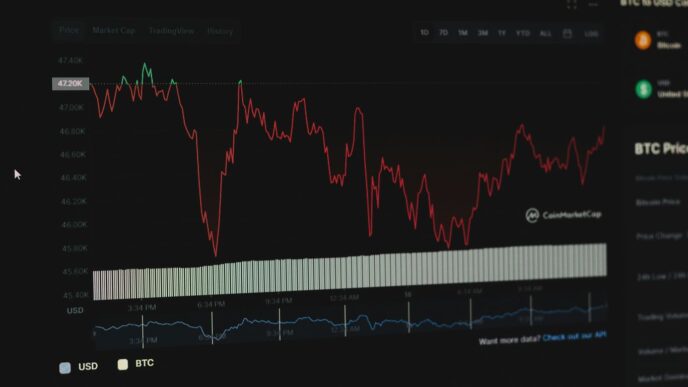Welcome to 2025. If you thought this year would bring a breather from job market ups and downs, think again. Things have really shifted. Companies aren’t just cutting jobs when they’re in trouble; they’re doing it strategically, even when they’re doing well. It’s all about getting leaner, faster, and ready for whatever’s next, especially with AI becoming a bigger deal. This means even solid jobs aren’t as secure as they used to be. So, staying informed about the layoffs 2025 tracker and what’s happening is more important than ever. We’ll break down the trends, see who’s affected, and talk about how you can keep your career on track.
Key Takeaways
- Layoffs in 2025 are often strategic moves by companies, not just reactions to financial hardship.
- The tech sector continues to see significant job cuts, driven by AI integration and efficiency drives.
- Even stable roles are being re-evaluated based on their alignment with a company’s current strategy.
- Federal agencies are also contributing to workforce reductions, impacting overall job numbers.
- Preparing for career uncertainty involves staying adaptable and informed about market changes.
Navigating the 2025 Layoffs Tracker Landscape
Welcome to 2025, a year that’s proving to be quite the rollercoaster for the job market. It feels like just yesterday we were talking about recovery, but now, uncertainty seems to be the main theme. Across the board, from tech startups to established financial institutions, the way we think about job security is changing. Companies aren’t just cutting jobs when they’re in trouble anymore; it’s become a more calculated move. Think streamlining operations, boosting efficiency, or getting ready for whatever comes next. This means even solid performers might find themselves on the chopping block if their roles don’t quite fit the new company direction, especially with the big push into AI.
Understanding the Shift to Strategic Layoffs
Layoffs in 2025 aren’t just about survival anymore. Many profitable companies are making these decisions deliberately. They’re looking to cut costs, speed up AI integration, or simplify their organizational charts. This shift means that having a good performance review isn’t the guaranteed safety net it used to be. If your job isn’t directly tied to a company’s current roadmap or its AI plans, it might be considered less critical, regardless of how well you’re doing.
Key Trends Impacting Job Security in 2025
Several factors are shaping the job landscape this year. Economic ups and downs are a big one, of course. But the rapid adoption of AI and automation is also a major player, changing what skills are needed and which roles are still relevant. Investor expectations are also playing a significant part, pushing companies to show quick returns, which often leads to workforce adjustments. It’s a complex mix, and staying informed is your best defense.
Here’s a quick look at some of the numbers:
| Month | Tech Layoffs (Approx.) |
|---|---|
| January | 2,403 |
| February | 16,234 |
| March | 8,834 |
| April | 24,500+ |
| May | 10,397 |
| June | 1,606 |
| July | 16,142 |
| August | 505+ (as of Aug 13) |
Staying Informed Amidst Market Volatility
With all this change, keeping up with what’s happening is more important than ever. It’s not just about reacting when something happens; it’s about anticipating. This tracker is designed to help you see the patterns and understand the broader picture. For instance, the tech sector continues to see significant job cuts, with over 80,000 tech workers laid off by mid-year due to restructuring and AI integration. Keeping an eye on these trends can help you make better decisions for your own career path. You can find more details on specific company actions, like those at Microsoft, to get a clearer view of the market.
Tracking Layoffs Across Industries
It feels like every industry is feeling the pinch these days, doesn’t it? We’re seeing a lot of movement, and it’s not always for the better. Let’s break down what’s happening across some of the major sectors.
Technology Sector Layoffs: A Continued Trend
The tech world has been a hot topic for job cuts, and that doesn’t seem to be slowing down much. We’ve seen big names like Intel, Tesla, and Cisco making significant workforce reductions in recent years. For example, in 2024 alone, it’s estimated that over 95,000 tech workers in the US lost their jobs. This year, while the numbers might fluctuate week to week, the trend of companies streamlining operations and focusing on efficiency is still very much alive. Companies like Amdocs and Tata Consultancy Services have announced substantial layoffs, often citing the need to adapt to new technologies or market demands. It’s a sector that moves fast, and sometimes that means people get left behind.
Financial Services and Banking Sector Cuts
When the economy gets shaky, the financial sector is often one of the first to react. We’re seeing banks and financial services firms making adjustments, too. Companies like Santander UK and BlackRock have announced workforce reductions. These cuts are often tied to broader restructuring efforts, like expanding into new asset classes or simply trimming costs to stay competitive. It’s not always about massive numbers, but even a percentage cut can mean a lot of people looking for new opportunities. Intuit, for instance, made a significant layoff announcement earlier this year.
Impact on Manufacturing and Media Industries
It’s not just tech and finance. The manufacturing sector has also seen its share of job cuts. Companies like Mercury Marine and Renesas Electronics have had to make tough decisions, sometimes due to decreased demand for their products or global supply chain issues. For example, Mercury Marine announced temporary layoffs affecting a large portion of its workforce. In the media and entertainment space, companies like Warner Bros. Discovery have been restructuring, leading to job losses. These cuts often come as companies try to adapt to changing consumer habits and new business models, which can be a real challenge.
Here’s a quick look at some of the numbers we’ve seen:
- Technology: Over 95,000 jobs cut in 2024 (US-based companies).
- Manufacturing: Companies like Mercury Marine and Renesas Electronics have announced significant workforce reductions.
- Media & Entertainment: Warner Bros. Discovery is among those making cuts as part of restructuring.
- Financial Services: Santander UK and BlackRock have both announced layoffs in 2025.
Major Companies Announcing Workforce Reductions

It’s been a rough start to 2025 for many workers, with big names across various sectors announcing significant workforce reductions. Companies are really looking at how they operate, trying to cut costs and focus on what they think will make them money in the long run. It’s not just about cutting jobs, though; it’s often framed as a strategic move to get leaner and more efficient.
We’re seeing a lot of this in the tech world, but it’s spreading. For example, Meta is letting go of about 5% of its staff, with CEO Mark Zuckerberg saying they need to "move out low performers faster" and that 2025 will be an "intense year." Similarly, Workday, a company that deals with human capital management, is cutting around 8.5% of its employees, which is about 1,750 people. They’re saying this is to put more money into artificial intelligence and expand into other countries. Even established companies like Electronic Arts are making cuts, letting go of 300 to 400 employees to focus on their "long-term strategic priorities."
It’s not just tech, though. The automotive industry is also feeling the pinch. Bridgestone Americas is closing a plant in La Vergne, which means 700 workers are out of a job. They’re calling it a move to "optimize its business footprint." Porsche is planning reductions too, mostly through voluntary packages and early retirement, because demand for their electric vehicles isn’t as strong as they hoped, plus there are other economic issues.
Here’s a quick look at some of the major announcements:
- Bell Canada: Announced an "enhanced voluntary separation program" for about 1,200 unionized employees, citing "unprecedented challenges" and changes in how customers use their networks.
- Estée Lauder: This cosmetics giant is cutting up to 7,000 jobs, about 10% of its workforce, because demand has dropped. They’re calling it a major restructuring.
- Salesforce: Another tech company making cuts, letting go of 1,000 employees.
- Chevron: Plans to lay off 8,000 employees, or 15% to 20% of its global workforce, by the end of 2026 to cut costs and simplify its business.
- Commerzbank: This German bank is planning to cut 3,900 jobs as part of its restructuring to become more efficient and profitable.
These widespread workforce reductions highlight a significant shift in how companies are approaching their operations and staffing in 2025. It’s a tough time for many, and understanding these moves can help people prepare for what’s next in their own careers.
Analyzing Layoff Data and Trends
Looking at the numbers behind the job cuts can be a bit of a puzzle, but it’s important to get a handle on what they actually mean. It’s not just about how many people are let go, but also why and how companies are making these decisions. We’re seeing a shift from companies cutting jobs only when they’re in serious financial trouble to a more strategic approach, even for profitable businesses.
Companies are cutting jobs not just to survive, but to get leaner and faster. This often means streamlining operations, integrating new tech like AI, or just trying to make investors happy by showing better profit margins. It’s a different ballgame than it used to be.
Here’s a look at some of the trends we’re tracking:
- The Scale of Cuts: We’ve seen significant numbers across the board. For instance, in 2024, the tech sector alone saw over 95,000 job losses. And so far in 2025, we’re already tracking over 3,140 companies announcing mass layoffs. It’s a lot to take in.
- Methodology Matters: How these numbers are gathered is key. Most trackers, including this one, rely on media reports, company announcements, and crowdsourced data. It’s important to remember these are often estimates, and sometimes the exact impact on the U.S. workforce isn’t perfectly clear.
- AI and Efficiency: A big driver behind many of these cuts is the push for efficiency, often powered by AI. Companies are looking at how technology can do more with fewer people, leading to a re-evaluation of roles that might not directly support these new, streamlined processes.
It’s a lot to process, but understanding these patterns helps us see the bigger picture of what’s happening in the job market right now.
Preparing for Career Uncertainty in 2025

Alright, so 2025 is shaping up to be a year where you really can’t just coast. The job market feels… different. It’s not just about doing your job well anymore; companies are making cuts for all sorts of reasons, even when they’re doing fine financially. Think efficiency, AI upgrades, or just trying to look good for investors. It’s a bit unsettling, I know. But honestly, the best way to deal with this is to be ready.
Proactive Steps for Career Resilience
It’s easy to feel anxious when you hear about layoffs, but there are concrete things you can do to feel more in control. Staying informed and adaptable is your best defense.
- Keep Your Skills Fresh: Don’t wait until you need them. Look at job descriptions for roles you might want in the future. What skills keep popping up? Maybe it’s a new software, a different approach to project management, or even just getting better at presenting your work. There are tons of online courses and workshops out there. Even small steps make a difference.
- Build Your Network: Seriously, talk to people. Not just for job hunting, but to understand what’s happening in different industries. Grab a coffee (virtual or real) with former colleagues or people you admire. You never know where a conversation might lead or what insights you might gain. It’s about staying connected.
- Financial Check-up: This is a big one. If you can, try to build up a small emergency fund. Even a few months of living expenses can take a huge weight off your shoulders if the unexpected happens. Look at your budget, see where you can trim down, and maybe explore ways to earn a little extra on the side while you’re still employed.
Adapting to Non-Linear Career Paths
Gone are the days when everyone followed a straight line up the corporate ladder. Careers are getting a lot more… wiggly. You might switch industries, take a step back to learn something new, or even start your own thing. It’s not a bad thing! It just means you need to be flexible.
- Reframe Your Experience: Think about all the different things you’ve done, even the stuff that doesn’t seem directly related to your current job. Problem-solving, managing difficult situations, learning new software quickly – these are all valuable skills. Practice talking about them in a way that shows your adaptability.
- Be Open to Different Roles: Sometimes the next step isn’t a promotion. It might be a lateral move into a different department or even a different field that uses your core strengths in a new way. Keep an open mind about what your career could look like.
- Embrace Continuous Learning: This ties back to skills, but it’s broader. Be curious about new technologies, new business models, and how your industry is changing. The more you understand the bigger picture, the better you can position yourself.
Maintaining Confidence Through Market Shifts
It’s tough not to take layoffs personally, but remember, these decisions are usually about the company’s needs, not your individual worth. Staying confident is key to bouncing back.
- Focus on What You Control: You can’t control the company’s decisions, but you can control how you prepare, how you present yourself, and how you react. Channel that nervous energy into productive actions like updating your resume or practicing interview questions.
- Celebrate Small Wins: Did you finish a tough project? Did you learn a new skill? Acknowledge those achievements. It helps build momentum and reminds you of your capabilities, especially when the external environment feels shaky. You can check out recent layoff data to see how others are being affected, which might help contextualize your own situation layoff data.
- Seek Support: Talk to trusted friends, family, or even a career coach. Sharing your concerns can make a big difference. Knowing you’re not alone in feeling this way can be incredibly reassuring.
Federal and Corporate Restructuring Impacts
It’s not just the big tech companies or the media outlets making changes to their staff these days. We’re seeing a broader trend where government agencies and corporations are both looking at how they operate, and sometimes that means fewer people are needed.
Government agencies, for instance, are facing their own pressures. Think about budget shifts or changes in priorities. This can lead to workforce adjustments, sometimes through voluntary programs or by consolidating roles. For example, the U.S. Postal Service is looking at reducing its workforce through early retirement options to manage costs. Similarly, universities that rely on government funding, like Johns Hopkins, have had to make significant cuts when that funding changes, impacting international employees particularly.
On the corporate side, the drive for efficiency is a big deal. Companies are constantly trying to streamline operations, often because investors are pushing for better returns. This can mean restructuring departments, merging teams, or adopting new technologies like AI that can handle tasks previously done by people. Morgan Stanley, for instance, is cutting jobs as part of a plan to improve how it works and adapt to more automation. Even companies in manufacturing, like Renesas Electronics, are reducing staff due to lower demand for their products, which is a direct impact of broader economic shifts.
Here are some common reasons we’re seeing these restructuring impacts:
- Cost Containment: This is a big one. Companies are looking at payroll, which is often their largest expense, and finding ways to reduce it. This can involve pausing hiring, freezing promotions, or cutting benefits.
- Operational Efficiency: Merging departments, eliminating redundant roles, or outsourcing certain functions are all ways companies try to work smarter and leaner.
- Adapting to Market Changes: Whether it’s a drop in demand for a product, shifts in customer behavior, or the integration of new technologies, companies need to adjust their workforce to stay competitive.
- Investor Expectations: Publicly traded companies often feel pressure from shareholders to show consistent growth and profitability, which can lead to tough decisions about staffing levels.
It’s a complex picture, and these changes aren’t always about a company doing poorly. Sometimes, it’s about adapting to a changing world, and that can unfortunately mean job losses for some.
Looking Ahead: Staying Prepared in a Shifting Job Market
So, 2025 has definitely shown us that job security isn’t what it used to be. Companies are making changes for all sorts of reasons, not just when things are bad. It means we all need to be a bit more aware of what’s happening in our industries and with our employers. Keeping your skills fresh and knowing what’s going on out there is more important than ever. Don’t just wait for news to hit you; try to stay a step ahead. Your career is yours to manage, and being ready for whatever comes next is the best way to keep moving forward.
Frequently Asked Questions
What exactly is a layoff?
Layoffs happen when a company has to let go of workers, either because they don’t have enough money or there isn’t enough work for everyone. Sometimes, it’s a temporary situation, but often in tech, it means the job is gone for good. When a lot of people lose their jobs at the same time, it’s called a mass layoff, usually because of big changes in the economy.
Are there still a lot of layoffs in 2025?
Yes, job cuts are still happening in 2025. Many companies are letting people go to save money, become more efficient, or get ready for new technologies like AI. Even companies that are doing well are making these changes. The tech world is seeing a lot of these cuts, but other areas like finance and manufacturing are affected too.
Why are tech companies cutting jobs?
Tech companies are cutting jobs for a few reasons. Some hired way too many people during the pandemic when everyone was at home, and now they have too many workers. Others are trying to save money because sales are slowing down or they’re worried about the economy. Plus, with new tech like AI, companies are changing how they work and sometimes that means fewer people are needed.
What kinds of jobs are being cut in tech?
Layoffs have been happening across many different jobs in tech. Software engineers have been let go from big companies, but startups often cut jobs in areas like hiring, marketing, or other support roles. Companies are cutting jobs in sales, advertising, and even in their cloud services.
Will there be more layoffs in the future?
Yes, more job cuts are expected. Even though the number of layoffs might be slowing down a bit, experts think companies will keep making cuts for a while. Smaller tech companies, especially those just starting out, might cut jobs to save money because it’s harder to get funding these days.
Where can I find out about recent layoffs?
You can find the latest news about layoffs by following specific news sources that track these changes. Many websites update regularly with information on which companies are cutting jobs and how many people are affected. It’s good to check these trackers often to stay informed about the job market.














